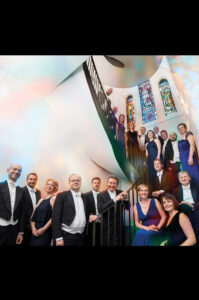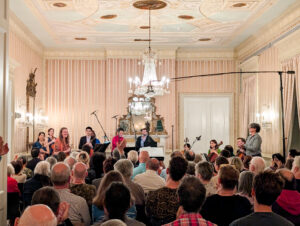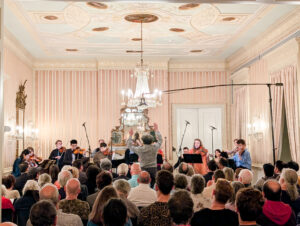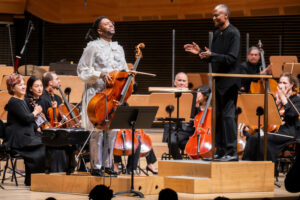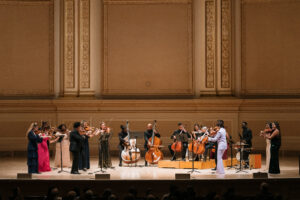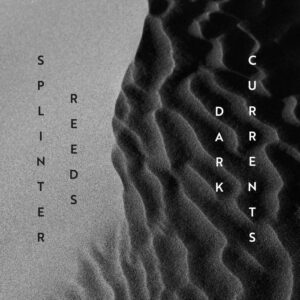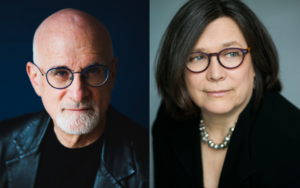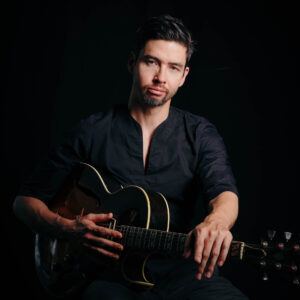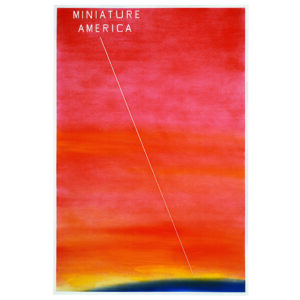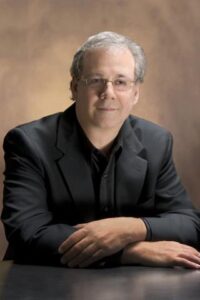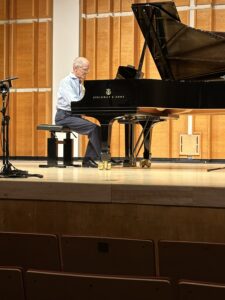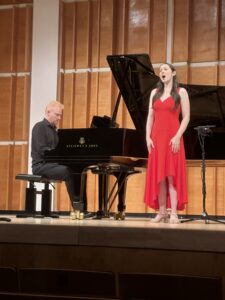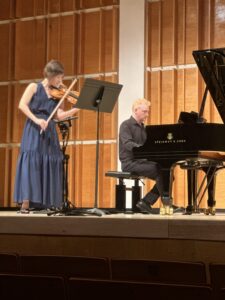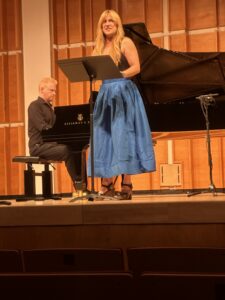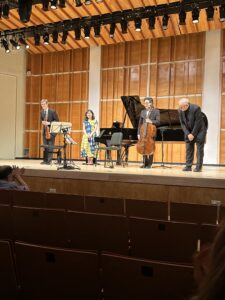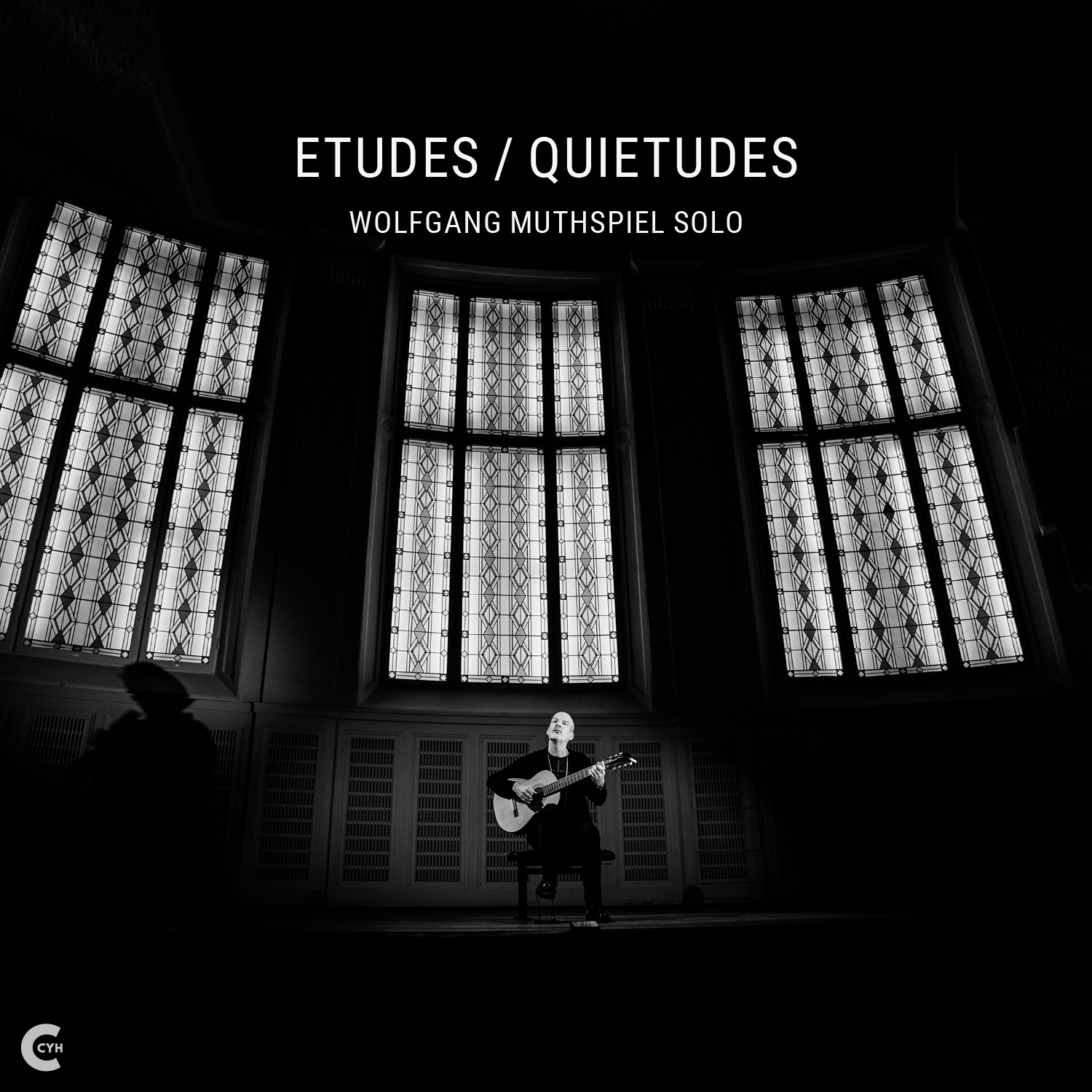The Sixteen, conducted by Harry Christophers
The Deer’s Cry
Miller Theatre Early Music Series at Church of St. Mary the Virgin
Saturday, October 26, 2024
NEW YORK – This past Saturday, renowned British vocal ensemble The Sixteen, conducted by Harry Christophers, made their Miller Theatre Early Music Series debut. Presented at Church of St. Mary the Virgin in midtown, the group performed music from their latest recording on Coro, The Deer’s Cry. Consisting of works by English Renaissance composer William Byrd (1540-1623) and Estonian composer Arvo Pärt (1935-), this seemingly eclectic pairing worked well together. Christophers may often be economical in his gestures, but he elicits a beautiful sound and detailed approach from The Sixteen. St. Mary’s is a wonderfully resonant space in which to sing, allowing the ensemble to be shown to its best advantage.
Byrd was a recusant Catholic, refusing to join the Church of England at a time when his own faith was frequently persecuted. He was fortunate to have the most influential patron one could hope for: Queen Elizabeth. She gave Byrd and his older colleague Thomas Tallis exclusive rights to publish music in England, and for the most part was able to shield Byrd from the authorities. Some of the biblical texts he set, such as Ab Dominum cum tribular, heard on The Sixteen’s program, were repurposed to comment on the tenuous position of Catholicism in England.
The Sixteen presented a number of Byrd’s Latin motets. The composer delighted in learned devices such as canon. The evening’s opener, the eight-voice motet Diliges Dominum, features a “crab canon,” one in which the tune is designed to be performed forwards and backwards. This complex concoction likely delighted the composer, and was notated in customary fashion, with a poem indicating how to realize the canon; a code to crack for the performers. Miserere nostri is a collaboration between Tallis and Byrd, in which four lines were written by Byrd and another three by Tallis. Once again, canonic procedures are utilized, this time dealing with proportional lengths of melodic lines and intervallic inversion. Ab Dominum cum tribularer uses imitative motives that move throughout its eight parts to create a contrapuntal web. Christe qui lux es et dies takes a different approach, alternating chant and chordal passages, demonstrating Byrd’s capacity to create a simple, yet poignant, motet as well.
The program’s title work, by Pärt, is a setting of a modern English translation of the Irish prayer also known as St. Patrick’s Breastplate. There is a sustained soprano line with harmony in blocks in the men’s voices. Partway through, all the voices join in a rousing tutti, followed by a long decrescendo to conclude. The Sixteen sings with an extraordinary capacity for dynamic control and nuance, which was amply demonstrated here. Pärt’s Nunc Dimittis, the text a part of the evening prayer service, uses his signature tintinnabuli (bells) style, where some singers perform mostly linear chant-like melodies and others arpeggiate triads, creating both moments of consonance and dissonance in turn. Nunc Dimittis overlaps a number of parts, creating what feels like an entire set of cathedral bells pealing. The Woman With the Alabaster Box recounts the story from the Gospel of Luke, where a woman anoints Jesus’s head with expensive ointment. The disciples object to this opulent gesture, but Jesus tells them that it is appropriate.Here, the musical language is sparer, even severe in the dialogue between Jesus and the disciples. Perhaps Pärt agrees with the commentators who suggest that the anointing is, metaphorically, a preparation for Jesus’s death. The three selections by the Estonian composer showed the multiplicity of elements in his music, a vivid palette that too often has been mislabeled “holy minimalism.”
The concert program concluded with Byrd’s Tribue domine, an elaborate six-voice setting of a prayer of supplication, in which there is much alternation between different portions of the ensemble and tutti singing. The encore was Vigilate. which The Sixteen recorded for A Watchful Gaze (2023), another album focused on Byrd’s music. Taken at a brisk tempo with a thrilling conclusion, The Sixteen and Christopher’s rendition of Vigilate was the most dramatically intense performance of Byrd I have ever heard. An untoppable conclusion to their first visit to St. Mary’s under the auspices of Miller Theatre. One hopes they return regularly.
Christian Carey
Sequenza21
